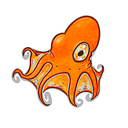What Does A Cockatiel Need?
Being a cockatiel is exhausting. I assume. I’m just a human watching a horde of cockatiels, Benny, Louie, Stella and Winston. Twin boys and their parents. Four or more cockatiels flying create rampant sounds of an invading horde. Wild cockatiels are ground foragers, like their fellow Australian birds, parakeets. These flocks land in large swaths of hundreds to harvest, play, and eat. They seek treetops for rest and safety. Chaos is a cockatiel marker. Chaotic foraging hordes are a farmer’s bane. They feast on pods, nuts, fruits, legumes, flowering plants, seedlings, and seeds. They gorge with grand passions. Wild cockatiels live in arid and semi-arid land, always near water. These facts shed light on what our companion cockatiel’s need. How your cockatiel lives inside your life will directly affect their quality and quantity of life. Stress, air quality, food, water, housing, employment opportunities, and sense of self make big impacts.
What do cockatiels like in their cage?
- Have a second cockatiel, same gender. They are happier and healthier with a friend. If you can’t provide a second in the flock, make sure to increase the time you spend with them, their time out of the cage, and options to choose inside their cage.
- Cage floor fun. As ground foragers cockatiels are looking for reasons to be on the floor of their cage. Give them many. Start with a tight woven towel for footing comfort. Add a glass pie pan filled with healthy foods, sticks and twigs from your trees (that get no pesticide sprays) outside.
- Place perches at angles. Found healthy dry branches are excellent additions. Consider the branches of a tree. Pure chaos. They are not all horizontal. Most are wonky, elbowed, Y shapes leading to M shapes requiring monkey like climbing. Cockatiels love monkey chaos branches.
- Foraging and fussing toys hung near a perch. Think play stations. Each play station perch can have one type of element. Grass. Paper. Wood. Woven intricate contents.
- Thin cardboard boxes (like those for cans of soda). Don’t use these if you have a girl and a boy. You’ll end up with baby urges. Benny and Louie love their boxes. They carry hay and foods inside. They chew the boxes down to bits of colorful card boards. Duly note; boxes can create a territorial attitude, a natural response. I personally tolerate a lot of natural response attitudes around here from all our parrots. By bringing a parrot into a companion lifestyle, we’ve removed 80% of their natural options. Their world is small. For me, I think their ability to express themselves needs to be as wide as possible.
- Hay, grasses, and those types of bedding for rabbits and guinea pigs. Cockatiels will feast on the seeds of first cuttings of timothy hay. They will forage, and play, and chew hay and grasses up with joy. Cluster that in food clips or cuttlebone holders next to a perch. Bundles of chewing at a play station.
- Cuttlebone calcium stations.
- Multiple types of perches from natural branches, cotton, grape vine, to sets of different widths and shapes. Remember parrot feet do poorly on dowel rods. When you bring a new cage home. Save the dowel rods for growing plants on. Bring in various types of perches from grooming to natural for your bird’s foot health. How many pairs of shoes do you own? How many perches should your parrot have? Same thing really.
- Water bowls. Offer filtered water only. Globally, water quality is at its lowest in history. Two water stations will always be appreciated and used.
- Window views! Let the sunshine in! All parrots love a good view to fall into a nap gazing out.
What do cockatiels like to eat?
In the wild their natural foods are pods, nuts, fruits, legumes, flowering plants, seedlings, and seeds. Stick to what they instinctively know and seek.
- Create your own mix of multiple options. Add fresh snap peas, blue berries, fresh flower blossoms (have a flowerpot garden of your own, to ensure organic no pesticide grows) Our horde love and look for their ZuPreem pellets. No matter what I mix in, they always want those pellets. Test driving different options will be a fun process for you and your parrot. Remember, parrots change their opinions as easily as a human.
- I also add in old fashioned oatmeal oats and pearled barley.
- I personally offer nuts once a month. A limited fats diet. Too much fat triggers hormones.
- Every parrot is different, and your bird will let you know what they do and don’t like about all your ideas. Be ready to pivot. In our horde, chaos is supreme. I don’t attempt to have a ‘pretty’ cage setup. There’s no point to that with cockatiels. Chaos loves chaos. When they are happiest with the setup, they are the messiest. I do my best not to clean up. But rather, keep up.
Cockatiels are not starter birds. They are a parrot of the cockatoo family. Be prepared to be challenged and loved by a cockatiel with the same noise, devotion, mess, and stubborn opinions as any large parrot. In their head, they are massive. Dinosaur big! Just play along, it makes it all funnier.
